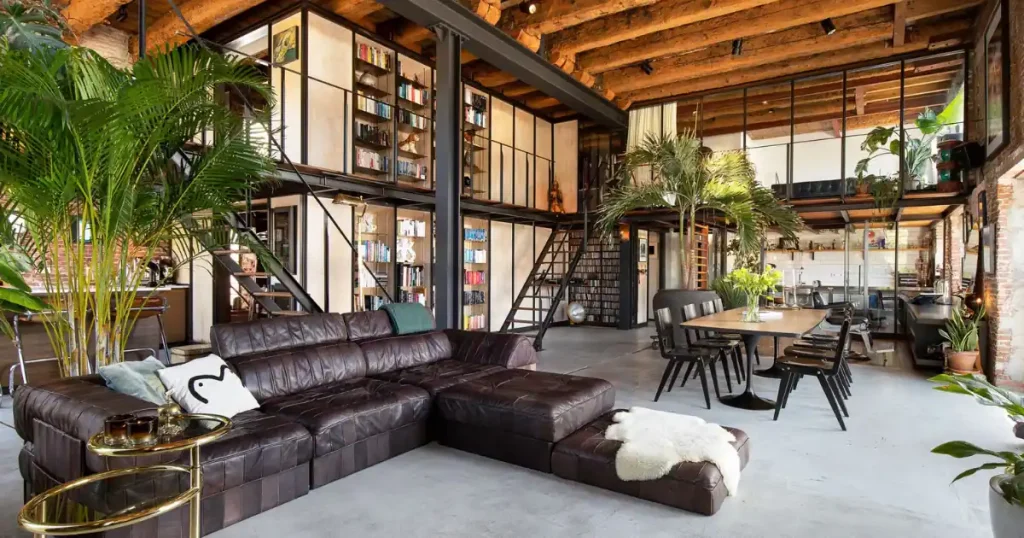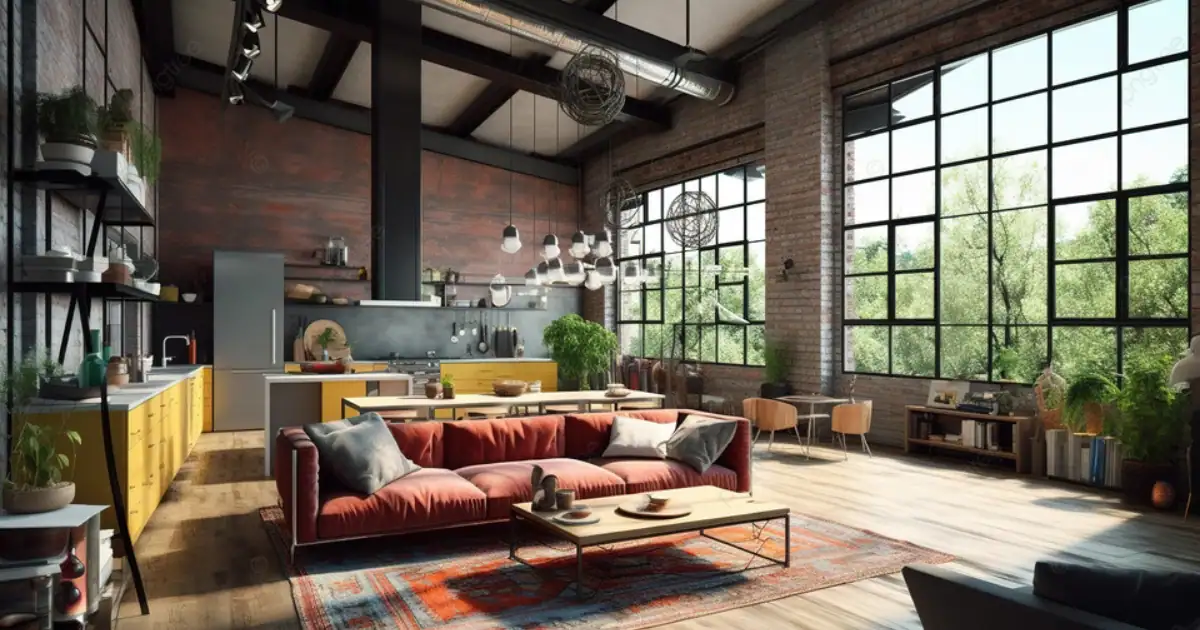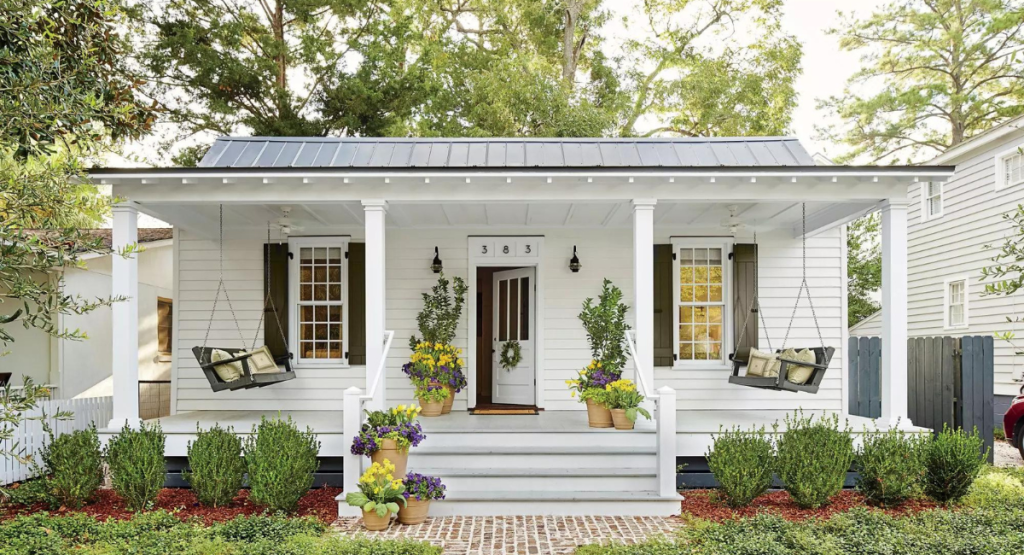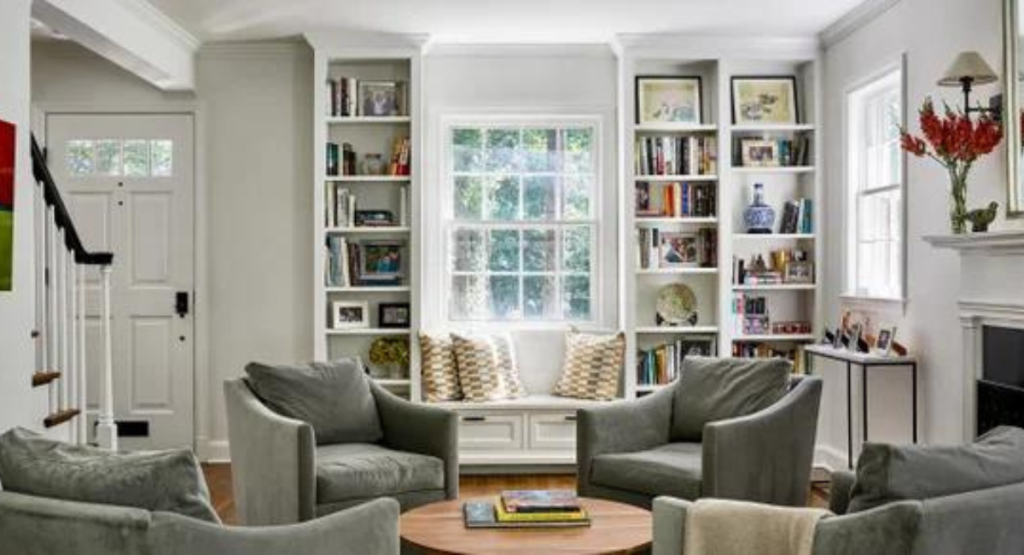Open-concept kitchen islands with columns have gained significant popularity in modern home design. These kitchen islands offer a seamless connection between your cooking, dining, and entertaining spaces, making it an ideal location for all your activities. By incorporating columns into the design, you can easily add structure and style to your home.
The columns help define different areas in an open floor plan while adding architectural interest and character to your space. This discussion explores the benefits and challenges of integrating columns into open-concept kitchen islands. It also provides insights into ensuring the design is functional and visually appealing, which is crucial in creating a beautiful and practical home.
Table of Contents
Benefits of Open Concept Kitchen Islands
Having an open plan kitchen island is an addition, to houses. It provides advantages that can enhance your cooking sessions. With an open plan kitchen island you’ll have a spot to prepare meals while engaging in conversations with your loved ones. In open plan kitchen islands are indispensable for those looking to elevate their space and transform cooking, into a more pleasurable activity.
A. Enhanced Social Interaction and Connectivity:

An open-concept kitchen island is a type of kitchen layout that removes walls between the kitchen, dining, and living areas. This design promotes togetherness by allowing family members and guests to communicate and bond while cooking and conversing. The open kitchen creates a welcoming environment that encourages shared experiences and strengthens social connections within the home.
B. Increased Natural Light and Spatial Perception:
Open-Plan kitchen islands are a great way to make your kitchen brighter and more spacious. Natural light can easily come in by removing walls or barriers, making the kitchen and surrounding areas look brighter. Not only does this make your kitchen look better, but it also makes it feel more inviting. Your home will feel more open and airy, which can help you relax and feel more at ease.
C. Versatility in Design and Functionality:
Kitchen islands are a great addition to any home as they offer flexibility in design and functionality. These islands come in many styles and designs, from modern and sleek to rustic and cozy, so you can personalize your space to fit your taste. They provide a multifunctional space to cook, dine, and socialize with friends and family. An open-concept kitchen island is especially versatile as it can adapt to your daily activities and social interactions.
Incorporating Columns in Open Concept Designs
Incorporating columns into open concept designs is a smart choice for those who want both structural integrity and visual interest in their space. These architectural elements not only define different areas within an open floor plan, but also contribute to an overall sense of elegance and sophistication. Moreover, columns offer essential support for overhead structures, ensuring safety and stability in the space.
A. Structural Support and Architectural Aesthetics:

In modern kitchen designs, where the cooking, dining, and living areas are combined into one big open space, columns play an important role in maintaining the structure and enhancing the overall look. These columns are placed strategically to bear the weight of the ceiling or other overhead features, keeping everything stable and secure.
B. Integration of Columns as Design Elements:
Columns can make a great addition to a home with open spaces. Designers carefully choose their placement and design to ensure they blend in seamlessly. They can be customized to fit any style, whether traditional, modern, or a mix of both. Designers consider all aspects, including the material, shape, size, and decoration, to match the overall look and feel of the space.
C. Balancing Visual Appeal with Functional Requirements:
If you’re planning an open-concept kitchen island, it’s important to consider the columns that support it. These columns should be placed to maximize space and allow you to move around the kitchen without any trouble. You also want to choose materials that look great but are durable and easy to maintain. Y
Design Considerations
Designing open-concept kitchen islands with columns is a complex process that requires attention to detail. The goal is to create a visually appealing and functional space. When planning such a design, it’s important to consider the size of the kitchen, the number of columns, the placement of appliances, and the overall style.
A. Placement and Spacing of Columns:
When designing an open-concept kitchen island, it’s important to consider where to put the columns supporting it. You want to ensure the columns don’t get in the way of people moving around the kitchen. Designers carefully plan where to put the columns to ensure they don’t block the view or make it hard to move around. They also ensure plenty of space between the columns for people to move around comfortably.
B. Selection of Materials:
When designing a kitchen, choosing the right materials and finishes for the columns that hold up the ceiling is important. Many different materials exist, like wood, metal, stone, or composite. Each material has its look and feel, so it’s important to pick one that matches the style and theme of your kitchen. Y
C. Coordination with Other Architectural Elements and Furnishings:
Ensuring everything feels like it belongs when designing kitchen islands with columns is important. The columns should fit seamlessly with other kitchen parts, like the cabinets, countertops, and floors. It’s also important to ensure that the columns match other design elements in the kitchen, like beams, arches, or ceiling treatments.
Challenges and Solutions
Designing open-concept kitchen islands with columns presents a unique set of challenges that require careful consideration to ensure successful implementation and optimal functionality. The columns can create obstacles and interfere with the flow of the kitchen, making it difficult to create a design that is both aesthetically pleasing and practical.
A. Addressing Space Constraints and Layout Limitations:
When designing an open-concept kitchen with columns, designers face a few challenges. The main one is figuring out how to use the limited space while considering the columns’ structural requirements. To overcome this challenge, designers must develop creative solutions such as rearranging the layout, moving appliances and fixtures around, or adding space-saving features like built-in storage or smaller appliances. By doing this, they can create a functional and efficient kitchen layout with the most available space while keeping a consistent design.
B. Reducing Potential Visual Obstructions:
When designing an open-concept kitchen island, adding support columns can be tricky. Designers need to figure out where to place the columns so that they don’t block the view or disrupt the flow of the space. They also need to ensure the columns aren’t too big or noticeable. To do this, designers can use different techniques, like placing the columns in areas where they blend in with other kitchen parts or using slim columns that don’t take up too much space.
C. Implementing Creative Solutions for Seamless Integration:
When creating an open-concept kitchen with islands, it’s important to ensure that any columns in the space blend in well. Designers can use creative solutions to ensure the columns don’t stand out and look out of place. This might include making custom designs that match the rest of the kitchen or adding decorative elements that make the columns look more interesting.
Maintenance and Care
If you have an open kitchen with a fancy island with columns, it’s important to take good care of it to stay beautiful and strong for a long time. Following these simple tips ensures that your island keeps its charm and doesn’t lose appeal over time. With a little effort, you can easily maintain the look and feel of your kitchen’s centerpiece and enjoy it for years.
A. Cleaning and Maintaining Columns:
To keep your kitchen island looking its best, it’s important to clean and take care of the columns that hold it up. How you clean them will depend on what they’re made of and how they’re finished. Generally, you should dust them regularly and wipe them down with a damp cloth to remove any dirt or debris. If there are any stubborn stains, you can try using a cleaning product recommended by the manufacturer.
B. Preserving Structural Integrity:
Ensuring the columns holding up your kitchen island are strong and safe is important. You can do this by having a professional check them regularly for problems like cracks, sagging, or shifting. If there are any issues, you should fix them immediately so they don’t worsen and become a safety risk. Depending on whether the damage is bad, you might need to repair or strengthen the columns to keep them in good shape.
Customization Options
Open-concept kitchen islands with columns offer endless possibilities for customization, allowing you to personalize your space to match your unique preferences and needs. In this section, we’ll show you how to customize the columns in these designs to turn your kitchen into the perfect space. Don’t miss the opportunity to create the kitchen of your dreams.
A. Opportunities for Customization in Column Design:
When designing an open-concept kitchen, homeowners can make their kitchen islands stand out by customizing the columns that support them. This means they can choose different shapes, sizes, and styles of columns, ranging from modern to traditional and ornate. They can also choose the material and finish of the columns, such as wood, metal, stone, or composite, to match the overall design theme of the kitchen.
B. Collaboration with Architects and Designers:
Suppose you want to add unique and stylish columns to your open-concept kitchen island. In that case, you’ll need to work with architects and designers who can help you bring your vision to life. They’ll work closely with you to understand your design preferences, how you want your kitchen to function, and how much you can afford to spend. With their expertise, they’ll guide you through the entire design process, offering creative ideas and suggestions to help you achieve the look and functionality you want.
Conclusion
To create a personalized and functional kitchen space, homeowners must consider design considerations, customization options, and sustainability features. They should integrate columns seamlessly into the design, optimize space utilization, and incorporate eco-friendly materials and technologies.
Collaboration with architects, designers, and experienced professionals is essential in bringing homeowners’ visions to life. With careful planning, attention to detail, and a commitment to sustainability, open-concept kitchen islands with columns can transform ordinary spaces into extraordinary living areas that inspire and delight for years.
Frequently asked questions (FAQ’s)
Q: How can I ensure that the columns in my open-concept kitchen island blend seamlessly with the overall design aesthetic of my home?
A: Transform your home into a masterpiece by carefully selecting column designs, materials, and finishes that complement your home’s existing architectural elements and finishes. Collaborating with a designer or architect guarantees that your columns will perfectly integrate with your home’s style. Choose wisely and create a cohesive and stunning look that will leave your guests in awe.
Q: Should I consider structural considerations when incorporating columns into my open-concept kitchen island?
A: To guarantee the safety and stability of any construction project, it is crucial to ensure that the columns are designed to provide sufficient structural support for any overhead elements, such as beams or ceilings. By enlisting the help of a qualified structural engineer, you can rest assured that the columns will be properly sized and positioned to meet all necessary structural requirements, preventing any potential issues down the line.
Q: How can I maximize energy efficiency in my open-concept kitchen island design?
A: If you want to help the environment and save money on your energy bill, you can do some easy things. You can use energy-saving appliances, light bulbs, and more natural light and airflow in your home. These simple changes can greatly affect how much energy you use.
Q: What maintenance tasks are required to keep the columns in my open-concept kitchen island looking their best?
A: It is crucial to perform regular upkeep and cleaning of columns to ensure they look and function at their best. The cleaning techniques may differ depending on the material and finish of the columns. It is also necessary to conduct routine inspections to detect any signs of wear or harm. These maintenance measures will help extend your columns’ lifespan while preserving their appearance and structural integrity.
Q: Can columns in open-concept kitchen islands be used for additional storage or functional purposes?
A: It is possible to incorporate columns into the design of a kitchen island that can serve dual purposes; for instance, structural support can be provided while incorporating built-in storage solutions, shelving, or display areas. This approach can help with efficient space utilization and improve the overall functionality of the kitchen island.



